

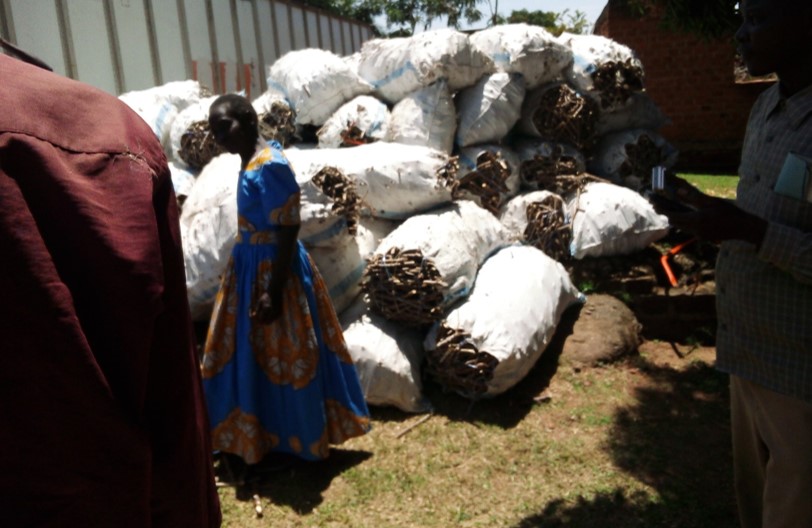
This annual report has been expanded to cover two strategic areas based on the global, national, and local development concerns listed in the strategic plan: Climate Change Mitigation and Sustainable Livelihoods. The strategic objectives for each strategic area are shown in the table below.
| No. | Strategic Area | Strategic Objective |
| 1 | Sustainable Livelihoods | To improve livelihood resilience of 8,400 household caregivers and youths. Creating market linkages at house hold level and increase access to money at house hold level. |
| 2 | Climate Change Mitigation and Adaptation | To strengthen capacity of 5,000 community members and 1,000 duty bearers to sustainably manage and utilize (conserve and restore) natural resources to lessen the effects of climate change. |
current unpredictability climatic change and weather for livelihoods for small-scale farmers has significantly disrupts livelihoods and economic security of many households. This largely explains why crop farmers are more vulnerable in Uganda as a whole. For instance, poverty increased from 23% (2013) to 36% (2017) among those reporting crop farming/subsistence farming as their main source of income according to the 2017 UNHS report
HADEO aims to improve the livelihood of farmer by supporting the farmers with high yielding and fast maturing inputs. Famers receive NAROCAS CASSAVA STEMS in Ngora District
With reference to the strategic plan, HADEO intends to further support small holder farmers to boost food production and productivity, increase household income, increase Agro-product value addition and knowledge on climate smart agriculture. HADEO plans to pilot integrated tree planting and sheep rearing in project areas as a method to cub climate change adaptation.
| Strategic Area 1: Sustainable Livelihood | ||
| Objective 1: To improve livelihood resilience of 8,400 household caregivers and 3,700 youths | ||
| Activity carried out | Outcomes | performance Indicators |
| 1000 farmers were trained in FAL,Financial literacy, agronomy as well as elements of agro ecology such as soil/water management, pest and weed control; demonstrations on good farming practices and enhanced crops that have markets were distributed out; community managed seed banks were established; exposure learning and farmers were trained in livestock production. | Increased agricultural production and productivity | Farmers have increased land size for agricultural production Farmers yields have increased per acre20% of Farmers are practicing Agri- business10% of farmers engaged in or are integrating livestock farmingMost farmers are saving now in the Sacco’s |
| 1000 farmers were trained in Financial literacy handling and Agri – business practices; farmer groups were formed to establish group owned post-harvest handling, storage, agro-processing, and value addition infrastructure; farmers were trained in value addition for food crop produce and market oriented farming, as well as value chain enterprise selection and business skills. | Improved post-harvest handling and storage, agro processing and value addition | 1000 farmers adopted efficient postharvest handling practices and marked managerial skills Reduced in post-harvest losses on priority commodities Most farmers using agro-processing and value addition facilities |
| Performed market research; gave farmers access to current market data; established marketing associations that were integrated with VSLA; instructed marketing associations on current market data; connected farmers to available marketplaces; enabled farmers to take part in food and seed fairs. | Increased access to profitable markets for the agricultural produce | 20%. of farmers accessed profitable market for their agricultural produce 15% of farmers reported higher sales of farm produce following use of shared market information |
| established and instructed VSLA groups in group dynamics and related methods; provided financial literacy training to the groups; facilitated TOTs to oversee VSLA groups and offer financial guidance; taught the VSLA groups how to combine the CAT, GBT, and GALS models; created a “savings for farming” savings plan for the VSLA groups; assisted in connecting the groups with larger microfinance organizations for further to form a SACCO | Increased access to and use of financial services for agricultural finance | 20% of households actively accessed and used loans from Sacco for farming 25% of Sacco members accessed credit from bigger financial SOFAL SACCO for farming and paying school fees. |
| Trained household heads and youth on micro enterprise selection, financial literacy and business skills for income generation; equipped them with IGA kits or inputs; Identified and trained youth and household heads on marketable skills and life skills; Linked the trained youth to formal and informal placements, equip youth with toolkits and mobilize youth to join government programs | Increased proportion of household heads and youths engaged in enterprise development initiatives and gainful employment | 10%. of households where one or more adults have earned income from selected enterprises 25% of youth outside formal education system employed in non-exploitative jobs at a living wage |
| Built capacity of communities on their rights, mobilize them to demand and use available service provisions; held dialogue meetings with duty bearers on service provision; strengthened coordination mechanisms; facilitated community-based extension to communities; advocated for increased budget and execution of policy frameworks on sustainable agriculture | Local leader’s/ duty bearers are accountable, develop plans of action and deliver sustainable livelihood services Mr. Malinga David of Ngora, one of beneficiaries of the improved sorghum seed (Epurpur and SESO III) | District Local governments increased budget allocation to agriculture District local governments implemented agricultural financing 20% of community members engaged in farming who received extension services in the last 6 months |
| Strategic Area 2: Climate Change Mitigation and Adaptation Not Implemented Yet | ||
| Strategic Objective 2: To increase the ability of 1,000 duty bearers and 5,000 community members to manage and use natural resources (conserve and restore) in a sustainable manner, thereby reducing the impact of climate change. | ||
| Activities carried out Outcomes Key performance Indicators | ||
| HADEO intends to establish and equip the community with climate change information; trained community members in commercial agro-forestry, including reforestation; carry out environmental awareness on natural resource and climate change management; link farmer groups to other actors in natural resource and climate change management; encouraged the use of clean development mechanisms; encouraged the use of energy-saving options; and supported the establishment of tree nurseries, the distribution of tree seedlings, and the planting of trees that embrace local indigenous species in target communities | Increased adoption and sustainable use of natural resources to manage climate change | 30% of households expected to practice environmental conservation and restoration 20 % households expected to practice tree planting as re/afforestation to conserve and restore environment 10% of farmers expected to integrate tree planting (agroforestry) in their farm |
| HADEO will supply planting supplies that are tolerant; instruct communities in climate-smart agriculture techniques; informed farmers about weather forecasts; instructed and assisted in the building of flood-resistant shelters; establish and teach local lending and savings institutions to incorporate adaptation and mitigation of climate change | Increased adoption of climate smart agriculture, agro ecology and alternative environmentally smart livelihood sources | 20% of farmers will adopt climate smart agricultural practices 10 % of farmers will be involved in at least two more additional alternative source of livelihoods 10% of farmers will be using recommended soil / water management practices |
| HADEO will establish and trained Disaster Management Committees on natural resource and climate change management; strengthened early warning systems for risk planning and built capacity of early warning monitors; supported contingency plan development to manage water, wetlands and forests; supported the development of sub county bye laws and district ordinances on natural resource management; linked the DMC committees and strengthen capacity of catchment management committees on wetland protection | Improved capacity of climate change and disaster risk management structures to detect and manage environment challenges | Village functional environmental and disaster risk management committees will be formedA task force of districts with effective disaster early warning systems will be in place Environmental byelaws and ordinances on environmental protection will be passed and implemented Climate change disaster risks detected early and published with clear adaptations measures |
| HADEO will Build the capacity of communities on their roles and government roles to protect natural resources; Mobilize communities to demand for and use available services provisions; hold dialogue meetings between communities and duty bearers on service provision, strengthen coordination mechanisms and advocate for increased budget and implementation of policy frameworks on protection of national resources and climate change management; train and facilitate local and national leaders to develop and implement sustainable Natural Resource Management (NRM) plans of action | Local leader’s/ duty bearers are accountable, develop plans of action and support sustainable use and management of natural resources | District disaster committeeof districts with a funded plan of action to implement government priorities on NRM 30% of community members satisfied with government service provision on NRM |
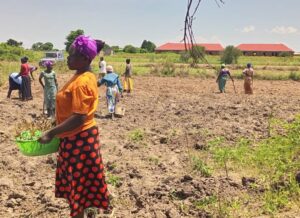
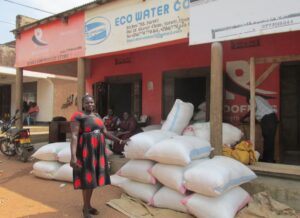
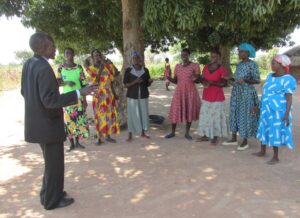
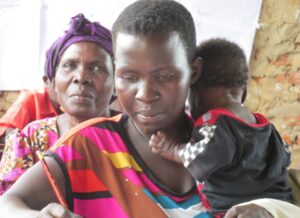

Leave a Reply